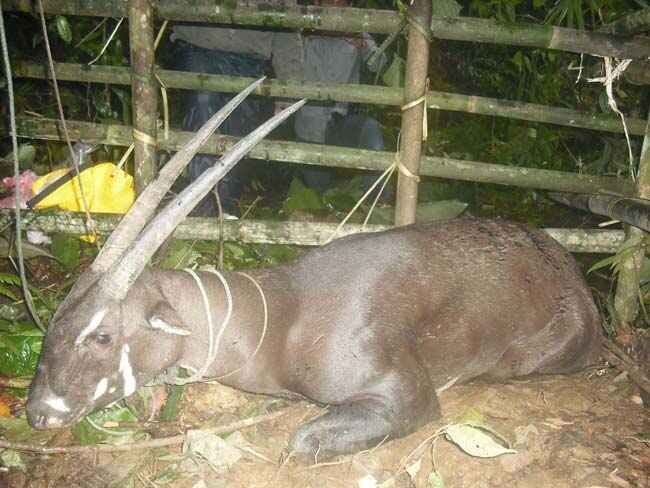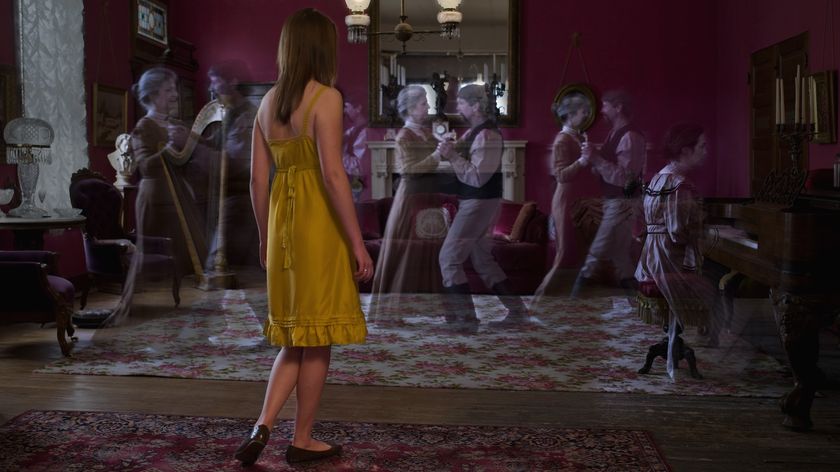
Rare Asian 'Unicorn' Sighted, Dies in Captivity

One of the rarest animals in the world has been sighted for the first time in more than 10 years, according to the government of Laos. Sightings of the animal, called a saola, are so rare that the creature has been likened to a unicorn, despite the fact that it has two horns, not one.
The Lao government announced that in late August villagers in the central province of Bolikhamxay captured a saola, which looks similar to an antelope, and brought it back to their village.
When news of the saola's capture reached Lao authorities, the Bolikhamxay Provincial Agriculture and Forestry Office immediately sent a team, advised by the International Union for Conservation of Nature (IUCN) and the Wildlife Conservation Society (WCS) to examine the saola and release it. Unfortunately, the animal, an adult male, weakened by the ordeal of several days in captivity, died shortly after. The animal was photographed while still alive.
"The government of Lao PDR and WCS are to be commended for their rapid response and efforts to save this animal. We hope the information gained from the incident can be used to ensure that this is not the last saola anyone has a chance to see," said William Robichaud, coordinator of the IUCN Saola Working Group.
Asian "unicorn"
This is the first confirmed record of the species since two photographs of wild saola were taken in Laos by automatic camera traps in 1999.
The Saola was first discovered in 1992, in Vietnam near the country's border with Laos. With its long horns and white facial markings, the saola resembles the antelope of North Africa, but is more closely related to wild cattle.
Sign up for the Live Science daily newsletter now
Get the world’s most fascinating discoveries delivered straight to your inbox.
Saola are secretive and so seldom seen (no biologist has ever reported spotting one in the wild) that they have been likened to mythical unicorns. Some speculate that a Chinese myth of a magical unicorn, the qilin, may have been derived from familiarity with saola in prehistoric China, although the species does not occur there today, if it ever did.
The saola is listed as critically endangered on the IUCN Red List of Threatened Species and probably no more than a few hundred exist. With none in zoos and almost nothing known about how to maintain them in captivity, extinction of saola in the wild would mean its extinction everywhere.
"The death of this saola is unfortunate," the Provincial Conservation Unit of Bolikhamxay Province said in a statement. "But at least it confirms an area where it still occurs and the government will immediately move to strengthen conservation efforts there."
Teachable moment
It is not clear why the villagers took the saola into captivity. After its death, the technical team took the carcass to Pakxan, the provincial capital, where biologists from the WCS and the Lao government preserved all parts for analysis, future study and reference. This is the first saola specimen to be so completely preserved.
"Study of the carcass can yield some good from this unfortunate incident. Our lack of knowledge of saola biology is a major constraint to efforts to conserve it," said Dr. Pierre Comizzoli, a veterinarian with the Smithsonian Conservation Biology Institute and a member of the IUCN Saola Working Group. "This can be a major step forward in understanding this remarkable and mysterious species."
The Lao Department of Forestry and provincial and district authorities are urging villagers in the area not to capture saola.













